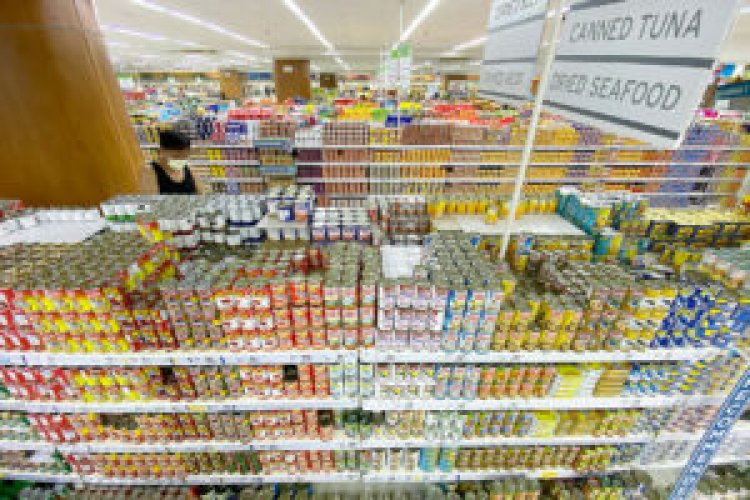Faster inflation seen in Sept. — poll
By Keisha B. Ta-asan INFLATION likely quickened in September due to higher electricity rates and food prices as well as the continued depreciation of the Philippine peso, according to analysts. A BusinessWorld poll of 13 analysts yielded...

By Keisha B. Ta-asan
INFLATION likely quickened in September due to higher electricity rates and food prices as well as the continued depreciation of the Philippine peso, according to analysts.
A BusinessWorld poll of 13 analysts yielded a median estimate of 6.7% for September inflation, at the low end of the 6.6-7.4% forecast of the Bangko Sentral ng Pilipinas (BSP).
If realized, September inflation would be faster than the 6.3% seen in August and the 4.2% last year. It would also mark the highest print in 45 months or since the 6.9% print in October 2018.
Inflation in September will also continue to breach the central bank’s 2-4% target for a sixth straight month.
The Philippine Statistics Authority (PSA) is scheduled to release the latest consumer price index (CPI) data on Oct. 5 (Wednesday).
“Inflation for the month is expected to (have been) driven by the increase in electricity rates and prices of key food commodities, as well as by the depreciation of the peso,” the BSP said in a statement on Friday.
Customers of Manila Electric Co. (Meralco) saw higher electricity bills in September after the overall rate went up by P0.3907 per kilowatt-hour (kWh) to P9.9365 from P9.5458 per kWh in August. This is after the combined reduction of P0.9154 per kWh in the past two months.
Prices of food have gone up in recent weeks, reflecting the impact of Super Typhoon Karding (international name: Noru) and the weaker peso against the dollar.
“(Higher inflation) could be offset in part by the decline in local fuel prices and lower meat prices,” the BSP said, reiterating that it will continue to closely monitor developments in accordance with its price stability mandate.
In September alone, oil companies cut pump prices for gasoline by P4.8 per liter, diesel by P9.95 per liter, and kerosene by P9.1 per liter.
“In terms of proportion to the headline reading, the food basket may have contributed approximately 2.8%, utilities by around 1.5%, and transportation by 1.3%, and core (consumer price index) is also projected to have continued its upward trend,” Robert Dan J. Roces, chief economist at Security Bank Corp., said in an e-mail.
“This means a mix of supply and demand side pressures are driving the inflation narrative as the peso’s depreciation bites unto prices,” Mr. Roces added.
The peso finished trading at P58.625 per dollar on Friday, gaining 34.5 centavos from its P58.97 close on Thursday, Bankers Association of the Philippines data showed. In September alone, the peso has weakened by P2.48 or 4.4% from its Aug. 31 close of P56.145.
“Several events could have affected inflation in September: continuous weakening of the peso against the dollar, several typhoons that have devastated our agricultural sector especially palay farmers,” De La Salle University economist Mitzie Irene P. Conchada said in an e-mail.
The damage caused by Typhoon Karding to the agriculture industry is now estimated at P3.1 billion, according to the National Disaster Risk Reduction and Management Council (NDRRMC).
PEAK INFLATION?
Inflation may have peaked in September, UnionBank of the Philippines, Inc. Chief Economist Ruben Carlo O. Asuncion said.
“We think that this may be the peak of headline inflation and the rest of 2022 may see inflation print above 6% (end-2022 at 6.1%),” Mr. Asuncion said, adding that he now sees average inflation at 5.4% this year and 3.6% for 2023.
“Looking further ahead, Q4 should see a more marked and sustained drop in headline inflation, thanks in large part to a broad-based moderation in non-core (i.e. food and energy) price pressures, as signaled increasingly clearly by global trends,” Pantheon Chief Emerging Asia Economist Miguel Chanco said in an e-mail.
On the other hand, ING Bank N.V. Manila Senior Economist Nicholas Antonio T. Mapa said inflation has not peaked yet, which will prompt further tightening from the Philippine central bank.
“Inflation has not peaked and will remain above 7% for at least the next 3 months, prompting at least 100-bp (basis point) worth of rate hikes by the BSP,” Mr. Mapa said.
The Philippine central bank on Sept. 22 raised its benchmark policy rate by 50 bps to 4.25%. Rates on the overnight deposit and lending facilities also rose by 50 bps to 3.75% and 4.75%.
The Monetary Board has raised rates by 225 bps so far since May.
The central bank also revised its 2022 average inflation forecast to 5.6%. The estimate for next year had also increased to 4.1%. Inflation would likely ease to 3% in 2024.
The Monetary Board will have its next policy-setting meeting on Nov. 17.















